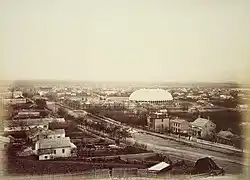
Utah and the Church of LDS refers to the Church of Latter-Day Saints (LDS) and the manner in which the settlement and history of the state of Utah in the United States has been shaped by the religious movement. The Church of LDS was only established in 1830 in New York by Joseph Smith, the author of the Book of Mormon. The first groups of Mormons experienced persecution and gradually moved westwards in search of freedom of religious expression. After Smith was killed by a mob in Illinois in 1844 his successor, Brigham Young, led the Mormons to Utah, a part of the United States which had experienced almost zero non-native settlement up to that time. In 1847 they founded Salt Lake City and over the next century the Church of LDS drove the settlement of the state. Even today 60% of Utah’s 3.4 million people identify as Mormons. Hence, a great proportion of people who live in Utah today will be able to trace their ancestry to adherents of the Church of LDS who have lived in the state since as early as the late 1840s or moved there to be closer to the heartland of Mormonism.[1]
Research your ancestors on MyHeritage
Utah and the Church of LDS chronology of eventsUtah and the Church of LDS chronology of events
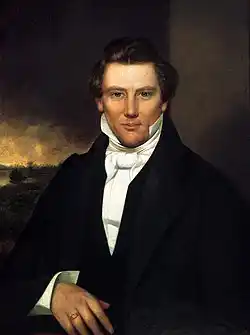
The Church of LDS’s associations with Utah began very soon after the emergence of Mormonism as a church in the United States. The movement was first established by Joseph Smith, a native of Vermont living in the west of New York State, in the late 1820s after he claimed to have experienced a series of religious revelations. This was in the midst of the Second Great Awakening in the United States, a period of intense religious revivalism. As a result, Smith soon gained adherents and in 1830 he presented his revelations in the form of the Book of Mormon. The new faith was based on the Judeo-Christian tradition, though it was very different from other branches of Christianity. Smith argued that all people are the spirit children of God and that some are in effect contemporary equivalents of Jesus Christ and his Apostles. Thus, his movement became known as the Church of Latter-Day Saints, as Smith claimed that there were living saints in the latter-day world. These were headed by a leader of the Church of LDS, who was in effect a latter-day Jesus Christ in Smith’s rendering, and a Quorum of the Twelve Apostles who were the modern manifestation of Jesus’s twelve Apostles.[2]
Even by the standards of the Second Great Awakening Smith’s beliefs were unorthodox and he and his followers had trouble gaining acceptance. They moved out westwards in the 1830s, first to Ohio and then to Missouri, the latter of which was on the western frontier of the United States at the time. Their goal was to establish a Zion or perfect religious community where their church would flourish. Everywhere they went they aroused antagonism, notably over their belief in polygamy, the practice of having multiple wives.[3]
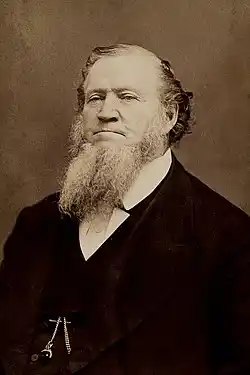
Eventually Smith was killed while in custody at Carthage in the state of Illinois after he and his Mormon followers had aroused the opposition of one too many local communities. A succession crisis ensued, one which led to multiple leaders emerging of different branches of the Church of LDS. James Strang, for instance, led one group to Beaver Island in Michigan, where he was crowned as the King of the Kingdom of God before being killed as well in 1856.[4] The most successful branch of the Church of LDS thereafter was led by the acknowledged successor of Smith, Brigham Young, who had been the President of the Quorum of the Twelve Apostles since 1840. He decided to lead his followers even further west, out to lands that were virtually uninhabited by any Americans at that time. In the summer of 1847 they arrived to the Salt Lake Valley in the Utah Territory.[5]
Young and his followers settled here and began building Salt Lake City, what they conceived of as a new Zion in this mountainous territory. Soon Mormons from all around America and further afield in Europe, where the religion had spread, flocked to Utah and Salt Lake City. Young was even acknowledged as the first governor of the Utah Territory by the US government in 1851, though he was eventually removed from that position in 1858 following the short-lived Utah War or Mormon War in which the government established federal control over the territory. Utah would eventually become a state in 1896. The Church of LDS continued to play an enormous role in its development and settlement.[6]
Extent of Mormon migration to UtahExtent of Mormon migration to Utah
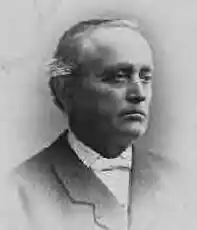
Young’s initial expedition to Utah in 1847 consisted of just a few hundred followers. The Church of LDS was a growing movement though by that time, particularly in the Great Lakes region that they had passed through on their westwards trek. Thus, more Mormons began to arrive to Utah in the years that followed. It is estimated that by 1869 some 80,000 Mormons had made the journey out west to Salt Lake City and other parts of Utah to live amongst their brethren.[7]
This process continued in the decades that followed. A particularly unusual element of it was the level of Danish migration involved. The Church of LDS had spread to Europe before long and gained a large number of adherents in Denmark after one of its early leaders, Erastus Snow, undertook missions there in the early 1850s. Denmark experienced its own unrest in the 1860s as a result of the Second Schleswig War (1864) and other disturbances and many Danish Mormons took ship for North America, ultimately bound for Utah. Thus, the Scandinavian migration to the Great Plains and Utah in the late nineteenth and early twentieth centuries was facilitated to some extent by the Church of LDS and its colonization of Utah. Many people of Danish ancestry in Utah today will be able to trace their heritage to Denmark and the proselytization of Mormonism there in the mid-nineteenth century.[8]
Demographic impact of the Church of LDS in UtahDemographic impact of the Church of LDS in Utah
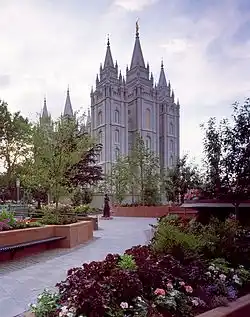
The demographic impact of the settlement of Utah by the Church of LDS can be traced quite simply by tracking the overall population growth of the state in the second half of the nineteenth century and into the twentieth. By 1850, three years after the first arrival of Young and the initial wave of Mormons, there were just over 11,000 people recorded here. That number grew to 40,000 by 1860 and then more than doubled to 86,000 by 1870. By the time statehood was granted in 1896 there were a quarter of a million people in Utah. The figure reached half a million in 1930 and a million in the mid-1960s. Not all of this was driven by the Church of LDS, but a very significant proportion was. This is clear when we consider that even today, nearly 180 years after the arrival of Young’s expedition in 1847, 60% of the people of Utah are adherents of Mormonism. Thus, the Church of LDS has shaped the settlement of the state since the mid-nineteenth century.[9]
Research your family history on MyHeritageResearch your family history on MyHeritage
See alsoSee also
Explore more about Utah and the Church of LDSExplore more about Utah and the Church of LDS
- Utah, Births and Christenings, 1892-1941 records collection on MyHeritage
- Utah, Marriages, 1887-1999 records collection on MyHeritage
- Utah, Deaths and Burials, 1888-1946 records collection on MyHeritage
- Utah, Salt Lake County Death Records, 1908-1949 records collection on MyHeritage
- Utah Burials records collection on MyHeritage
- Utah Newspapers, 1850-2003 records collection on MyHeritage
- Utah, Voter Registrations records collection on MyHeritage
- To Live and Die in Utah: Researching Vital Records at Legacy Family Tree Webinars
- Researching in Utah: Libraries, Archives and Online at Legacy Family Tree Webinars
- Counting Utah: Censuses, Directories and Voter Records at Legacy Family Tree Webinars
- Utah Newspapers and Digitized Books at Legacy Family Tree Webinars
References
- ↑ https://www.history.com/news/why-the-mormons-settled-in-utah
- ↑ https://www.pbs.org/wgbh/americanexperience/features/mormons-timeline/
- ↑ https://www.history.com/this-day-in-history/joseph-smith-abandons-ohio
- ↑ https://www.britannica.com/biography/James-Jesse-Strang
- ↑ https://rsc.byu.edu/firm-foundation/six-days-august-brigham-young-succession-crisis-1844
- ↑ Thomas G. Alexander, Brigham Young and the Expansion of the Mormon Faith (Norman, Oklahoma, 2019).
- ↑ https://www.britannica.com/topic/Church-of-Jesus-Christ-of-Latter-day-Saints
- ↑ https://www.danishmuseum.org/explore/danish-american-culture/immigration
- ↑ https://www.uen.org/utah_history_encyclopedia/p/POPULATION.shtml

